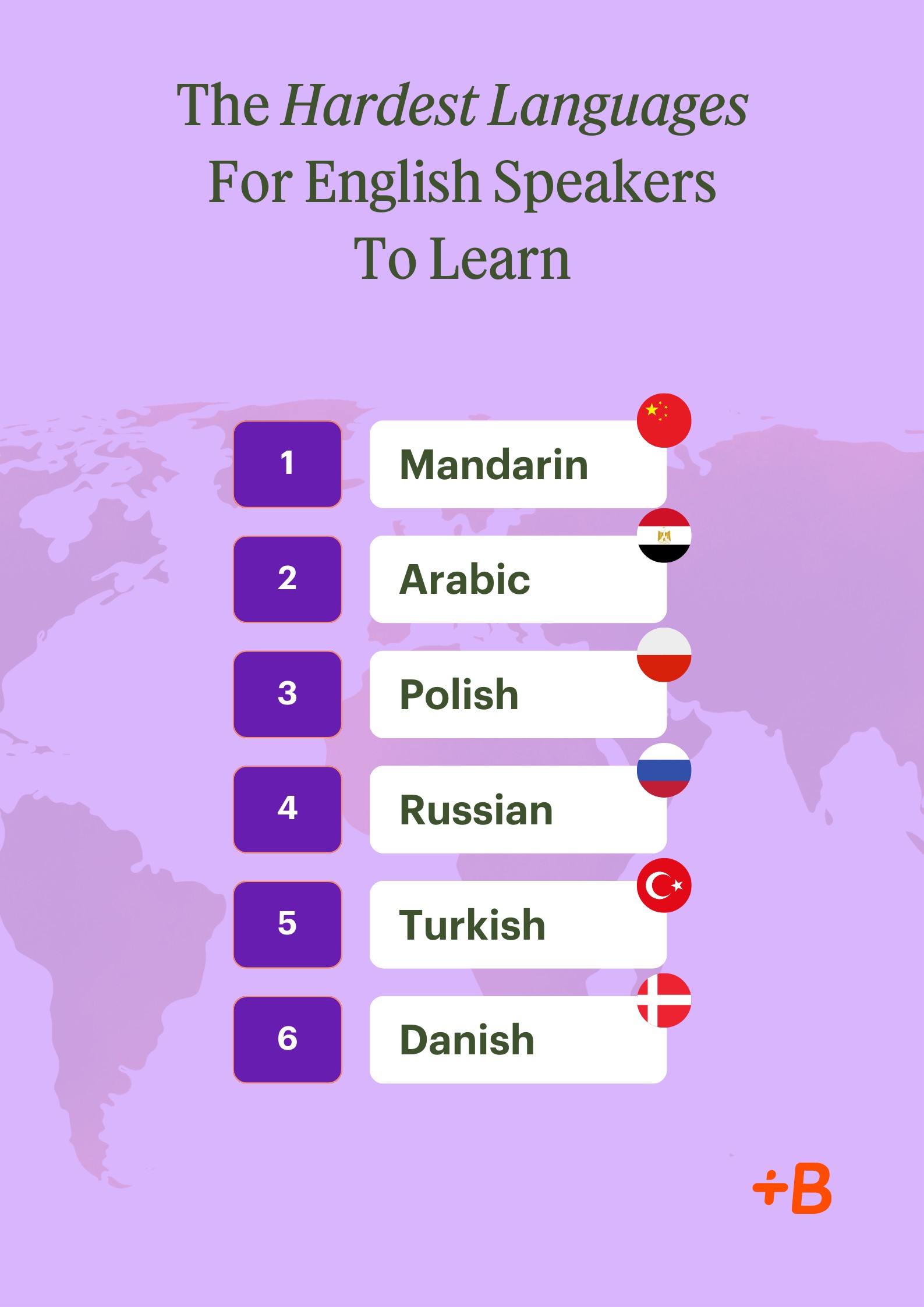Learning a new language can be an enriching experience, but some languages present a steeper learning curve than others. For English speakers, certain languages pose unique challenges due to significant differences in writing systems, pronunciation, and grammar. So, what is the hardest language to learn? Let’s delve into six languages that are widely considered the most difficult for English speakers to master.
 An infographic showing the six hardest languages to learn.
An infographic showing the six hardest languages to learn.
Decoding Difficulty: 6 of the Hardest Languages for English Speakers
Several factors contribute to the perceived difficulty of a language, including writing systems, grammar, pronunciation, and cultural context. While subjective experiences can vary, these six languages consistently rank among the most challenging for English speakers.
1. Mandarin Chinese: A Wall of Characters and Tones
Mandarin Chinese, the most spoken native language globally, often tops the list of the hardest languages to learn. Its complex writing system, comprising thousands of characters vastly different from the Latin alphabet, presents a significant hurdle for beginners. Beyond memorizing characters, mastering the four tones – where the same word can have different meanings depending on intonation – adds another layer of complexity to speaking and understanding.
2. Arabic: Navigating a New Script and Sounds
Arabic, another of the world’s most spoken languages, presents its own set of challenges. The non-Latin script, written right-to-left and often excluding vowels, requires significant adjustment. Furthermore, Arabic pronunciation involves sounds unfamiliar to English speakers, often produced in the back of the throat. The grammatical structure, with verbs preceding subjects and a dual form of words alongside singular and plural, further complicates the learning process.
3. Polish: Conquering Consonant Clusters and Cases
While using the Latin alphabet, Polish boasts complex grammar and spelling. Consonant clusters, like in the word “szczęście” (happiness), make pronunciation a challenge. The seven grammatical cases, similar to but more extensive than German, require significant effort to master.
4. Russian: Cyrillic Script and Grammatical Intricacies
Russian employs the Cyrillic alphabet, with some letters resembling Latin characters but having different sounds. This visual similarity can be deceptive for beginners. Grammatically, Russian features six cases, and the omission of the verb “to be” in the present tense adds another unique feature for English speakers to learn. Like Polish, consonant clusters contribute to the difficulty of pronunciation and spelling.
5. Turkish: Untangling Agglutination and Vowel Harmony
Turkish, an agglutinative language, forms words by adding prefixes and suffixes to indicate meaning and direction, leading to extremely long verbs. Vowel harmony, where vowels within a word influence each other, further complicates pronunciation. A significant portion of vocabulary, with Arabic origins, adds to the challenge.
6. Danish: The Pronunciation Paradox
Despite sharing similarities with easier Germanic languages like Norwegian and Swedish, Danish stands out due to its complex pronunciation. Words often sound drastically different from their spellings, requiring extensive practice to master. For example, “mit navn er” (my name is) is pronounced “meet now’n air.”
Conquering the Challenge: Is It Worth It?
While these six languages are undeniably challenging for English speakers, the rewards of fluency can be significant. From cultural immersion to career opportunities, the benefits of learning a difficult language often outweigh the challenges. With dedication, effective learning strategies, and perseverance, even the most complex languages can be conquered.
